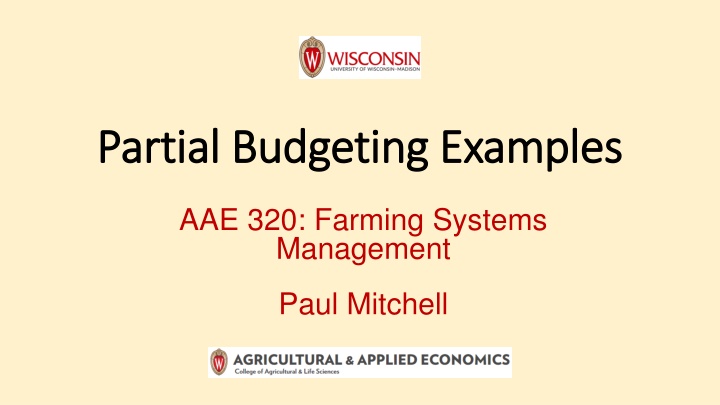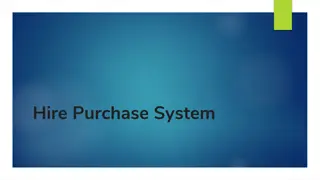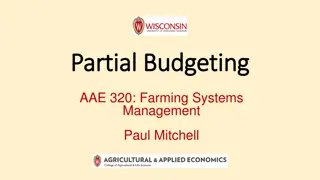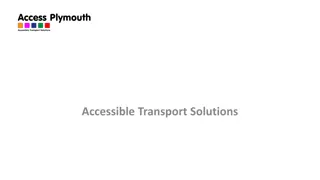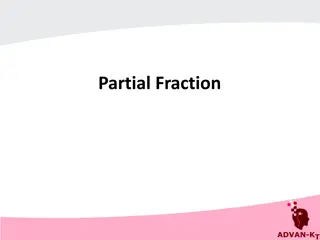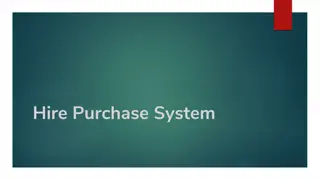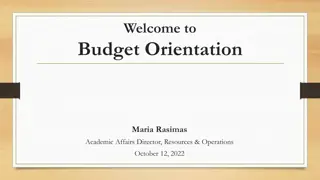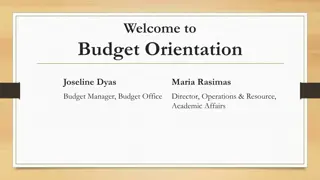Combine Purchase vs. Custom Hire Partial Budget Analysis
Explore the financial implications of purchasing a combine versus custom hiring for a corn-soybean farming operation. By comparing additional revenues, reduced costs, and total benefits, assess the potential net gain of ownership versus custom hiring based on yield gains and ownership costs.
Download Presentation

Please find below an Image/Link to download the presentation.
The content on the website is provided AS IS for your information and personal use only. It may not be sold, licensed, or shared on other websites without obtaining consent from the author.If you encounter any issues during the download, it is possible that the publisher has removed the file from their server.
You are allowed to download the files provided on this website for personal or commercial use, subject to the condition that they are used lawfully. All files are the property of their respective owners.
The content on the website is provided AS IS for your information and personal use only. It may not be sold, licensed, or shared on other websites without obtaining consent from the author.
E N D
Presentation Transcript
Partial Budgeting Examples Partial Budgeting Examples AAE 320: Farming Systems Management Paul Mitchell
Think Break #1 Think Break #1 You are a corn-soybean farmer currently custom hiring all combining. You are considering buying a combine. Do a partial budget analysis of a Combine Purchase vs. Custom Hire Corn acres = 250; Soybean acres 250 Custom Rates = $35/ac for corn, $33/ac for soybeans Ownership Cost Estimates: $40/ac for corn, $38/ac for soybeans 1% yield increase due to more timely harvest Average Yields = 180 bu/ac for corn and 60 bu/ac for soybeans Expected Prices = $3/bu for corn and $9/bu for soybeans
Think Break #1 Answer: Combine purchase vs custom hire Benefits Additional Revenues What will be new or added revenues? Costs Additional Costs What will be new or added costs? Costs Reduced What costs will be reduced or eliminated? Revenues Reduced What revenues will be reduced or lost? Total Benefits Total Costs Calculate Net Gain =Total Benefits Total Costs
Think Break #1: Answer Think Break #1: Answer Benefits What will be new or added revenues? 1% Yield gains Corn: 1% x 180 bu/ac x $3/bu x 250 ac = $1,350 Soybean: 1% x 60 bu/ac x $9/bu x 250 ac = $1,350 What costs will be reduced or eliminated? Custom hire costs Corn custom hire: $35/ac x 250 ac = $8,750 Soybean custom hire: $33/ac x 250 ac = $8,250 Costs What will be new or added costs? Ownership costs Corn ownership: $40/ac x 250 ac = $10,000 Soybean ownership: $38/ac x 250 ac = $9,500 What revenues will be reduced or lost? None
Think Break #1 Answer: Combine purchase vs custom hire Benefits Additional Revenues What will be new or added revenues? Corn: 1% x 180 bu/ac x $3/bu x 250 ac = $1,350 Soybean: 1% x 60 bu/ac x $9/bu x 250 ac = $1,350 Costs Reduced What costs will be reduced or eliminated? Corn custom hire: $35/ac x 250 ac = $8,750 Soybean custom hire: $33/ac x 250 ac = $8,250 Total Benefits $19,700 Costs Additional Costs What will be new or added costs? Corn ownership: $40/ac x 250 ac = $10,000 Soybean ownership: $38/ac x 250 ac = $9,500 Revenues Reduced What revenues will be reduced or lost? None Total Costs $19,500 Calculate Net Gain =Total Benefits Total Costs $200
Whats on Your Seed? What s on Your Seed? Seed treatments are very common for most seeds Fungicides, insecticides, nematicides, plant growth regulators https://ipcm.wisc.edu/downl oad/pubsPM/Whats_on_your _seed_web.pdf
Example #2: Seed Treatment Example #2: Seed Treatment You plant soybeans every year and are considering reducing seed costs by not buying an insecticidal seed treatment Do a partial budget analysis of with and without a seed treatment Seed seller: save $10/ac if no insecticide seed treatment Plant more seed per acre (stand loss due to insects) Increase costs by $4/ac Yield loss when planting later to avoid early season pests: lose 1 bu/ac Use a soybean price of $9/bu
Example #2 Answer: Insecticide seed treatment Benefits Additional Revenues What will be new or added revenues? Costs Additional Costs What will be new or added costs? Costs Reduced What costs will be reduced or eliminated? Revenues Reduced What revenues will be reduced or lost? Total Benefits Total Costs Calculate Net Gain =Total Benefits Total Costs
Example #2 Answer: Insecticide seed treatment Benefits Additional Revenues What will be new or added revenues? None Costs Additional Costs What will be new or added costs? More seeds per acre adds cost of $4/ac Costs Reduced What costs will be reduced or eliminated? Revenues Reduced What revenues will be reduced or lost? Seed treatment costs $10/ac Yield loss 1 bu/ac x $9/bu = $9/ac Total Benefits $10/ac Total Costs $13/ac Calculate Net Gain =Total Benefits Total Costs $3/ac
Example #3 Example #3
Example #3: Hay Baler Example #3: Hay Baler You have a small hay farm, with 100 acres of grass hay. You own a tractor, mower, and rake, but not a baler, so you custom hire someone to bale hay. On average, your yield is 5 bales of 1,200 pounds (= 3 tons/acre) each year and you pay the custom baler $10 per bale (= $50/acre) You are considering buying a hay baler because scheduling the custom hire is slow and sometimes your hay gets rained on before it s baled and you get a lower price. You currently get $100/ton on average for your hay. If you buy a baler, you expect to get an average price of $120/ton due to selling higher quality hay. You estimate the full cost to own & maintain a baler would be $18 per bale
Example #3 Answer: Buying a hay baler Benefits Additional Revenues What will be new or added revenues? Costs Additional Costs What will be new or added costs? Costs Reduced What costs will be reduced or eliminated? Revenues Reduced What revenues will be reduced or lost? Total Benefits Total Costs Calculate Net Gain =Total Benefits Total Costs
Example #3 Answer: Buying a hay baler Benefits Additional Revenues What will be new or added revenues? Higher price for all hay $20/ton x 3 tons/ac = $60/acre Costs Additional Costs What will be new or added costs? Cost to own and operate baler $18/bale x 5 bales/ac = $90/ac Costs Reduced What costs will be reduced or eliminated? Revenues Reduced What revenues will be reduced or lost? Cost of custom baling None 5 bales/ac x $10/bale = $50/ac Total Benefits $110/ac Total Costs $90/ac Calculate Net Gain =Total Benefits Total Costs $20/ac
